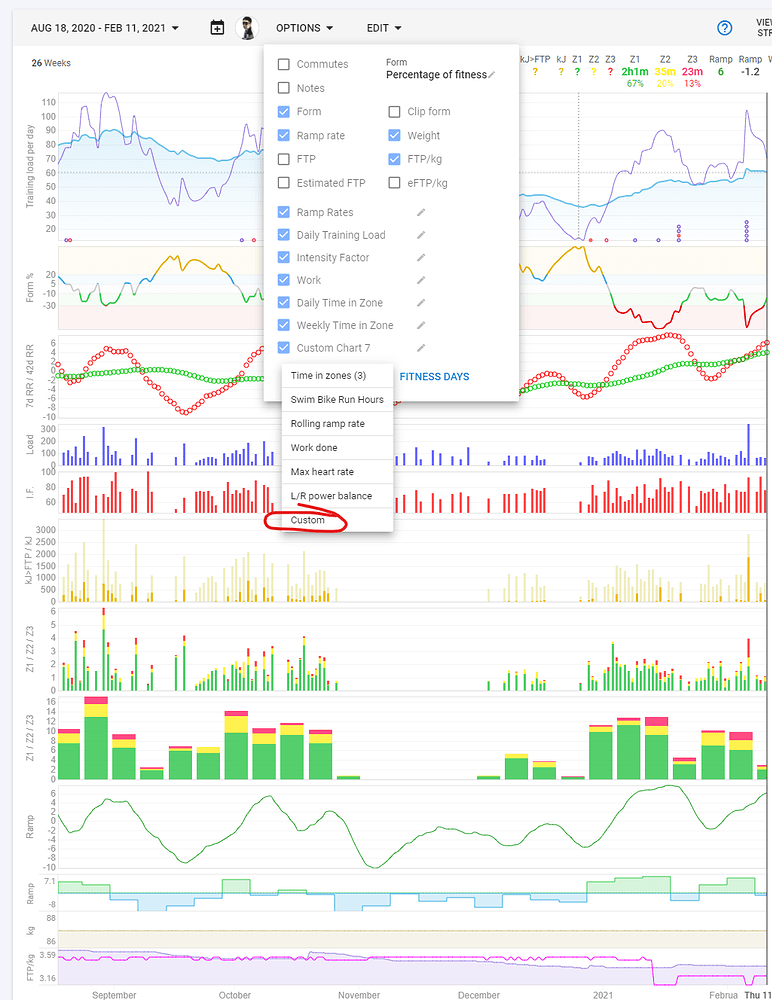
Looking at Form can also give you clues into how much stress you can handle before getting sick or injured. The dose of training that you accumulated over a short period of time, computed as an exponentially weighted moving average of the selected Training Load metric from 3 to 10 days in general, 7 by default. If your Form becomes too high it may indicate that you tapered too much and have lost fitness. ATL/STS: Acute Training Load/Short Term Stress. There is no single Form that works for every athlete, but as a general rule of thumb you would want to be slightly negative up to positive 25. However, by tapering you can shed fatigue at a greater rate than you lose fitness and come into form on the day that matters most… race day! In short, Fitness minus Fatigue equals Form. TSS is a term that belongs to Training Peaks, but youll find a very similar principle used elsewhere (Suffer Score, if youre living in an orange world with. A negative Form would indicate that you are carrying a lot of fatigue and are not on form. Just because you are fit does not mean that you are ready to race at your best. 138, 143 general skills and abilities, 147 Golden Cheetah analysis software. Form (Training Stress Balance, or TSB)įinally, by subtracting yesterday’s Fatigue from yesterday’s Fitness we come up with the yellow line, or the Form. 69 readjustments, 72 testing intervals, 6162 in TSS calculations. The PMC helps to tell a story, consistent training is marked by a steady rise in Fatigue and Fitness where as a sharp drop might indicate time off due to sickness or injury. You may notice that as Fitness goes up so does Fatigue, only at a greater rate. However, the workouts you did 15 days ago will impact your fitness more than the workouts you did 6 weeks ago. Fitness is an exponentially weighted average of the last 42 days of training and reflects the training you have done over the last 3 months. We also use each day’s TSS to calculate Fitness. (Click on the activity, then swipe left on the map to see power/cadence/HR data, zone data, etc.) TSS isn’t captured, but you can see the predicted number of stress points.

Most of your workout or ride stats can be seen in your ‘Activities’ feed in the Zwift Companion app. You do a hard workout today and you will feel it in the coming days. You will get your tss etc on the app after it uploads from Zwift. Here you can see on days with a workout with a high training stress score the Fatigue climbs sharply in response. Fatigue (Acute Training Load, or ATL)īy taking an exponentially weighted average of that stress from the past 7 days we are able to calculate your Fatigue, or an estimate of your fatigue accounting for the workouts you have done in the past two weeks. The red dots at the bottom of the screen indicates that there was no workout that day. Here we see a red dot representing each day’s workouts for an entire season. Every workout you do is assigned a training stress score based on duration and how intense the workout was relative to your threshold. It all starts with your Training Stress Score (TSS). Read on to find out how you can apply these metrics to optimize your training. The PMC maps these metrics concurrently so you can see how your daily training affects your fitness goals.Keep the chronic training load ramp rate to < 5 TSS/day/week. Your daily TSS can give you valuable insights into your cumulative training, including your fatigue (7-day average) your fitness (42-day average) and your form (yesterday’s fatigue subtracted from yesterday’s fitness). The difference are 256 (Stryd), 256 (Golden Cheetah), but signifiant difference between.It works by charting your daily Training Stress Score (TSS), which is based on the duration and intensity of each workout.



 0 kommentar(er)
0 kommentar(er)
